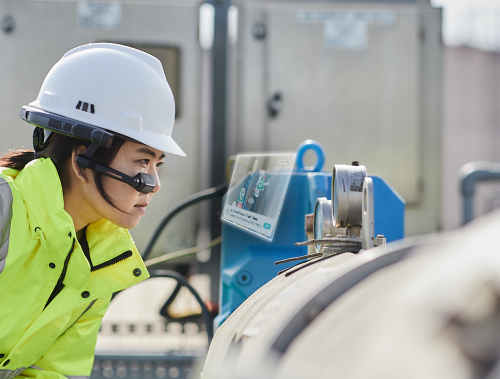Topics:
- Enterprise
- Healthcare
- Government
- Video Platform


Make frontline workers the centerpiece of your digital transformation strategy
Microsoft found that 60% of frontline workers want technology for improving safety and efficiency while cutting down on stress. However, about one third say they don’t have the right technology to do their job effectively. And on top of that, many companies face challenges related to the skills gap, employee satisfaction and employee engagement. Altogether, this shows vast potential for focusing digital transformation efforts on your organization’s frontline workers.
Many frontline workers increasingly are unable or unwilling to travel to remote, hazardous locations as much as in the past. At the same time, many experienced employees are nearing retirement age, making it essential to effectively train a new generation of energy frontline workers. Technology can help, but don’t forget that your frontline workers don’t sit in front of a computer all day like you probably do. That’s why you have a key role to play in choosing easy-to-use technology solutions to ensure adoption.
Extended reality (XR), an umbrella term for assisted reality (aR), augmented reality (AR), virtual reality (VR) and mixed reality (MR), holds great potential for frontline workers. In the energy sector alone, investments in XR are projected at 11.2% per year until 2030 (Guidehouse Insights). Also, consider that more than a third of the executives in EY’s survey already leverage XR, and around half of these XR early adopters plan to improve in this area.
Some of the most powerful use cases rely on a video link between a video-enabled wearable device worn by a frontline worker and a remote collaborator in an office or other location. To help frontline workers adopt and make the most of these new ways of working without losing time in a stressful situation, it’s important to deploy an easy-to-use and interoperable video platform. This means they should be able to instantly connect over video with remote collaborators – regardless of what device, browser or video conferencing service is used on both sides.
Pexip enables you to visually connect your operations center and meetings to XR wearables devices out in the field. We connect expert office staff with onsite field workers quickly and easily across a broad range of devices, allowing you to do more with your meetings.
Experience a flexible platform designed with interoperability at the center to bring in Microsoft Teams, Google Meet, Webex, and video conferencing room devices. Pexip partners and works closely with headset manufacturers like RealWear and vertical-centric partners including SimplyVideo and Hippo to bring easy-to-use and secure video platform to the XR space.
Learn more about how we empower frontline workers with instant, secure video communications.
Subscribe to our newsletter to get relevant industry news, reports, and other innovation.